
Hanna Mathilda Winge, née Tengelin was a Swedish painter and textile artist. She was one of the five founders of the Swedish women's association Nya Idun.
The Friends of Handicraft is a Swedish association for the education, development, production and experimentation of advanced textiles and design.
Emilie Anna Maria Kornerup née Bruzelius (1918–2006) was a Swedish-Danish textile artist who specialized in embroidery and tapestry. She produced works for decorating public buildings and churches, including the Danish Parliament and Roskilde Cathedral. Kornerup was also active as a teacher with the Haandarbejdets Fremme textile guild and the Danish School of Arts and Crafts.
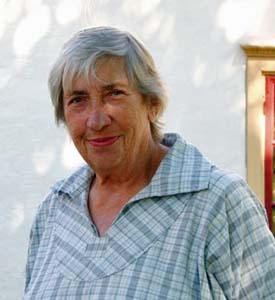
Edit Gunilla Margareta Lagerbielke (1926–2013) was a Swedish textile artist who exerted considerable influence on arts and crafts in Sweden as a result of her heading Konstfack and chairing the Swedish Arts Grants Committee. She is also remembered for the textile works she created with her husband Lars Johanson which were exhibited in Gothenburg in 1970.

Elisabeth Margareta Glantzberg (1873–1951) was a Swedish textile artist, educator and fashion designer. After spending several years teaching weaving and promoting Swedish textiles in Boston, Massachusetts, at the beginning of the 20th century, she returned to Sweden in 1909 where together with Emy Fick she established the Birgittaskolan in Stockholm. In addition to providing courses, the Birgitta School served as a leading textile studio producing decorative works, tapestries and rugs. She went on to produce fashionable clothing there until the mid-1930s, based on Parisian trends in haute couture and everyday wear.

Emy Oscaria Charlotte Fick née Kylander (1876–1959) was a Swedish textile artist, educator and fashion designer. After completing her education with study trips to Italy, France and Germany, she returned to Stockholm where she worked with textiles in the Nordiska Kompaniet department store. While there, she met Elisabeth Glantzberg with whom in 1910 she established Birgittaskolan which not only offered courses but served as a fashion studio where textiles could be ordered. After breaking up with Glantzberg in 1914, Fick set up her own business which she called Santa Birgittaskolan. From the late 1920s, the company became recognized for its tapestries. After closing the establishment in the mid-1930s, Fick moved to Östergötland with her large collection of lace, clothes and furniture which she left to Östergötland Museum.

Birgittaskolan or the Birgitta School was a Swedish textile arts establishment in central Stockholm founded in 1910 by Elisabeth Glantzberg and Emy Fick. It not only provided courses in sewing, embroidery and lace work but acted as a fashion studio, satisfying orders for underwear, decorative textiles and rugs. Unable to work together, in 1914 Glantzberg and Fick split their business into two separate firms. Glantzberg maintained the name Birgittaskolan while Fick called hers Sankta Birgittaskolan, emphasizing the connection with St Birgitta. Both establishments prospered until the mid-1930s.
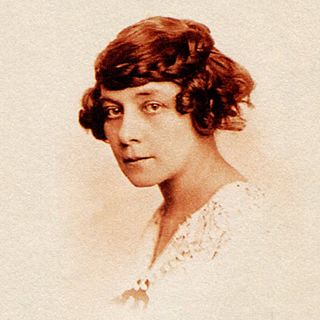
Maria (Maja) Sjöström (1868–1961) was a prominent Swedish textile artist from the 1890s to the 1930s. In particular, she designed intricate interior decorations for the new Stockholm City Hall. These included enormous silk tapestries which were woven at the Luigi Bevilacqua Textile Company in Venice. Following the opening of the city hall in 1923, Sjöström moved to Rome where she spent the rest of her life, ultimately in poverty, dismissed by the Swedes for her belief in Mussolini. Her reputation was however restored in the 2000s.

Märta Livia Vilhelmina Måås-Fjetterström was a leading Swedish textile artist in the early 20th-century. She is remembered in particular for the weaving studio she opened in Båstad in 1919 and for the decorative rugs she produced from the 1910s to the 1930s, increasingly combining rural Nordic traditions with modernist trends. Her works are exhibited in some of the world's most important art museums, including New York's Metropolitan Museum of Art and London's Victoria and Albert Museum.

Emma Carolina Helena ("Lilli") Zickerman (1858–1949) was a Swedish textile artist who pioneered the Swedish Handicraft Association in 1899. In 1914, she embarked on the creation of an inventory of popular textile art in Sweden, documenting some 24,000 items with photographs and samples of threads by 1932.
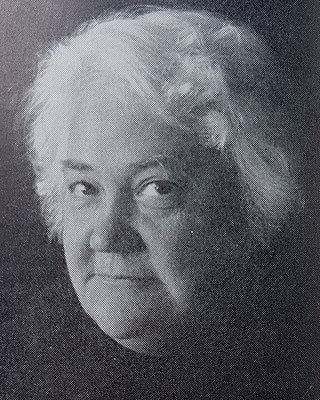
Barbro Nilsson née Lundberg (1899–1983) was a Swedish textile artist who is remembered in particular for her large tapestries, including the one she produced in collaboration with Sven Erixson for the Gothenburg Concert Hall in 1939. She was active as a teacher at Konstfack and as head of Märta Måås-Fjetterström's weaving establishment in Båstad. Nilsson produced her own rugs and church textiles, many with motives inspired by nature.

Inga Thyra Carola Grafström was a Swedish textile artist.

Thora Kulle née Nilsson (1849–1939) was a Swedish textile artist who specialized in weaving. In 1880, together with her brother-in-law, she opened a weaving school in Lund which developed into a textile retail business with several branches, including one in Stockholm. Her work attracted significant attention at the Copenhagen's Nordic Exhibition in 1888. At the Paris World Fair in 1900, she was a awarded a gold medal.

Bengta Eskilsson née Nilsdotter (1836–1923) was a pioneering Swedish textile artist who helped to safeguard Scanian weaving traditions. In 1887, she established a successful weaving school and textile business in Lund which she ran for many years together with her daughters and nieces. The pieces and patterns produced by the school were appreciated at home and abroad. She won silver medals at several Swedish exhibitions and a gold medal at the 1900 Paris World Fair. Several of her works were bought by royalty.

Sigrid Maria (Maja) Andersson Wirde (1873–1952) was a leading Swedish textile artist in the first half of the 20th century. From 1907, she worked for 20 years as a pattern designer for the Friends of Handicraft or Handarbetets Vänner in Stockholm where she created large carpets for Stockholm City Hall and textiles for the transatlantic liner MS Kungsholm. In 1929, she moved to the United States to work for the Cranbrook Academy of Art in Detroit, producing high-quality fabrics and carpets for the newly built Kingswood Girls' School. In 1933, she returned to Sweden where she opened a textile business in her native Algutsboda, employing some 20 embroiderers and weavers to create textiles for churches.

Carin Helena Wästberg (1859–1942) was a Swedish textile artist who helped to revive interest in textile arts in Sweden inspired by local peasant techniques and the developments she had seen in England. As its leader from 1904, she developed the Friends of Handicraft association into the country's top textile producer, creating a new production technique in collaboration with Maja Sjöström. Under her leadership, the association produced many notable works for public buildings in Stockholm, including those she herself designed in 1915 for the Stockholm Court House.
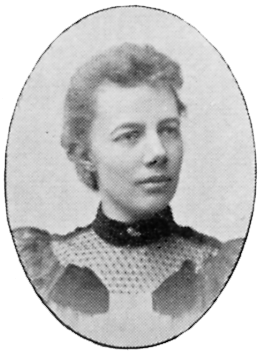
Agnes Margareta Matilda Branting (1862–1930) was a Swedish textile artist and writer. As director of the Friends of Handicraft association from 1891, she undertook developments in large woven tapestries with several prominent artists which led to Sweden's freestyle woven visual art. In 1904, she established the Licium workshop which produced religious and heraldic fabrics including flags and banners. She was also active in the preservation of textiles, establishing the Pietas society for this purpose. As a writer, she contributed articles on arts and crafts to Svenska Dagbladet and published books on textiles.

Eva Henriette Jancke-Björk (1882–1981) was a Swedish ceramist, painter and textile artist. She became a prominent porcelain designer, working for Rörstrand, S:t Eriks Lervarufabriker and Bo fajans before establishing her own business in Mölndal near Gothenburg. She produced simply designed bowls, flower pots and tableware, both decorated and monochrome. Jancke-Björk also painted watercolours, created textile patterns and worked with glassware. Her works are in the collections of the Swedish National Museum of Fine Arts and the Röhsska Museum.
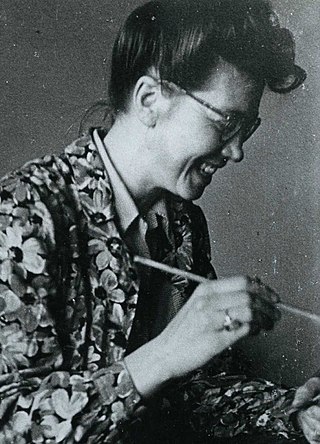
Berta Elisabet Hansson (1910–1994) was a Swedish artist and educator. She is remembered as one of the country's most prominent Expressionists, especially for her depictions of children. After first working as a schoolteacher, in 1940 she attended Otte Sköld's art school and started to paint. Impressed by her work, the writer and artist Elsa Björkman-Goldschmidt arranged a solo exhibition for her in 1943. Thanks to the interest of her reviewers, she soon became a full-time artist. In the 1950s, she spent a year in South Africa where she was upset by the conditions imposed on black people. On returning to Sweden she expressed her anti-apartheid feelings in artworks and textiles. Later in life, she turned to sculpture, creating portraits of children in terracotta and bronze. Her works can be seen in several Swedish museums including Nationalmuseet and Moderna Museet.

Sofia Gisberg (1854–1926) was a Swedish sculptor, textile artist and educator. From 1887, she taught at Tekniska Skolan, where she became director of women students until 1925, modernizing the teaching of textile arts. She is also remembered for designing the fountain in Vängåvan Park, Sundsvall, for her church textiles and for creating certificates for Nobel prizewinners. Examples of her work are in the collection of Stockholm's National Museum.


















